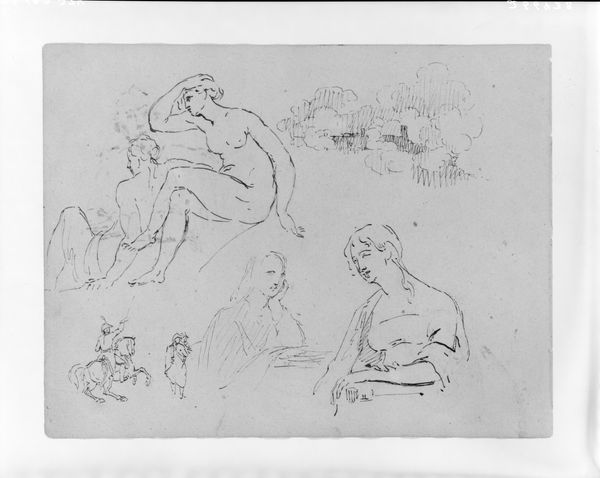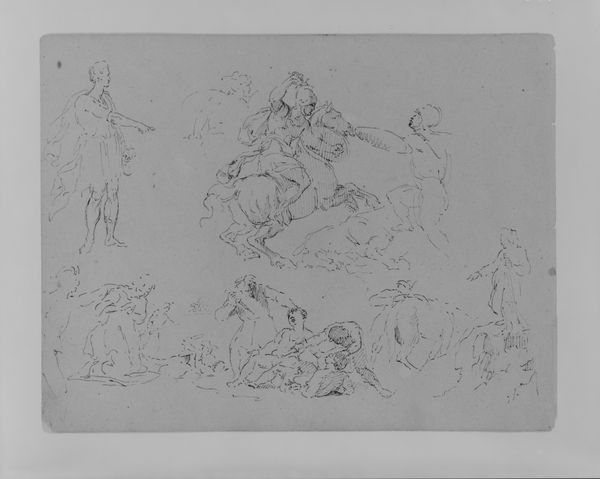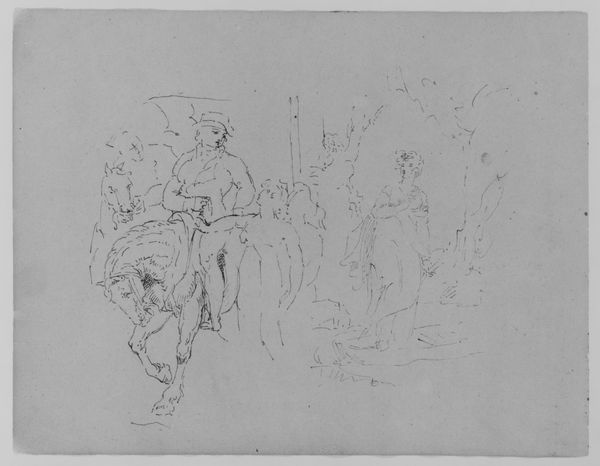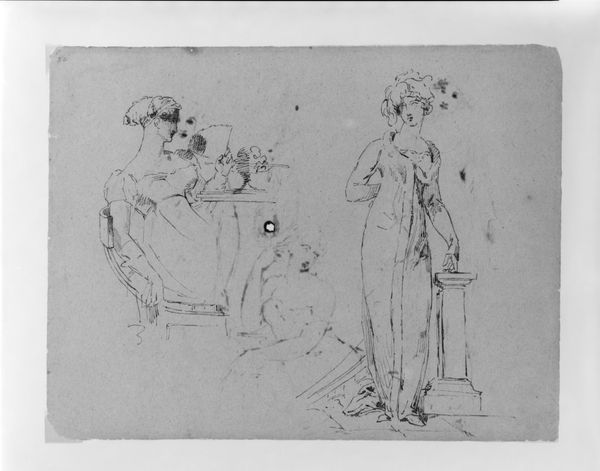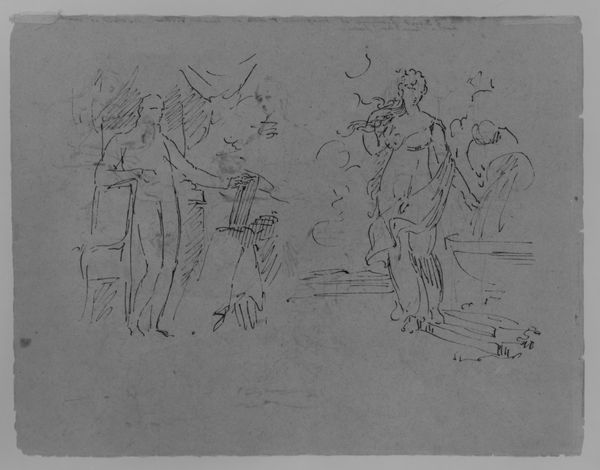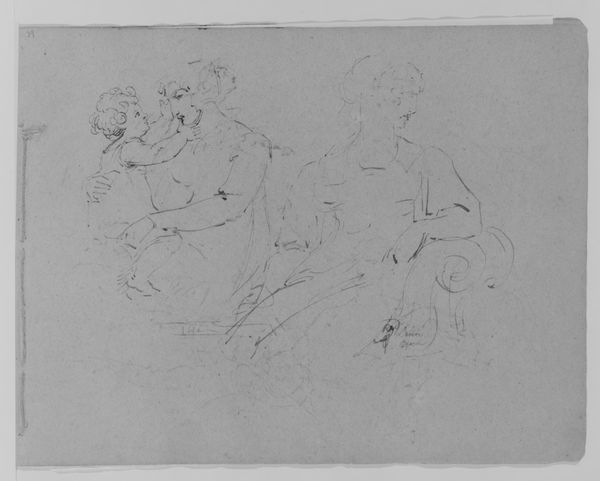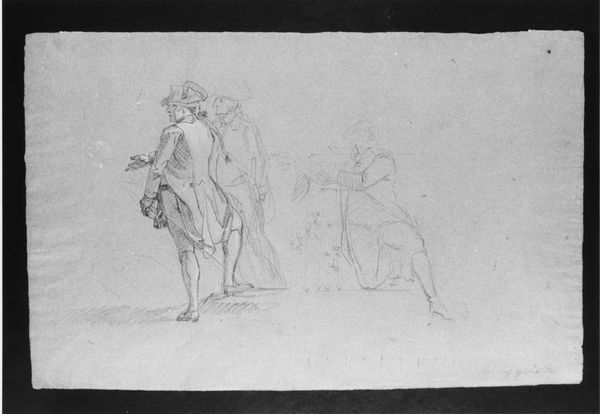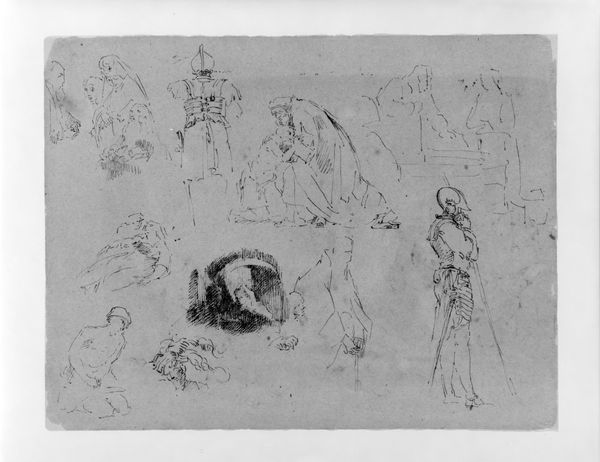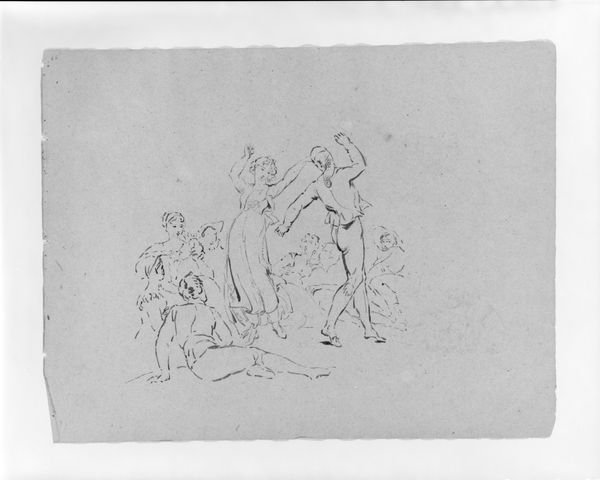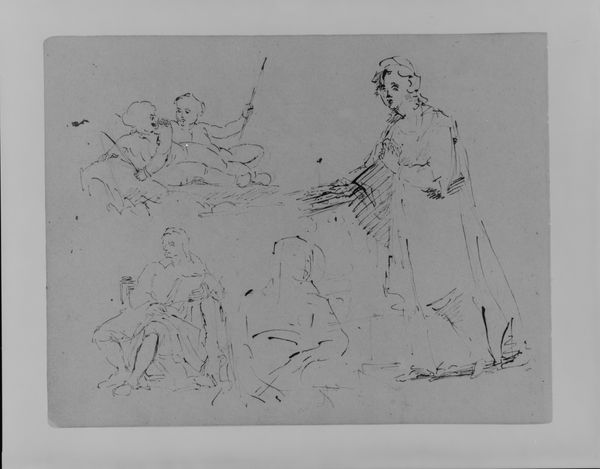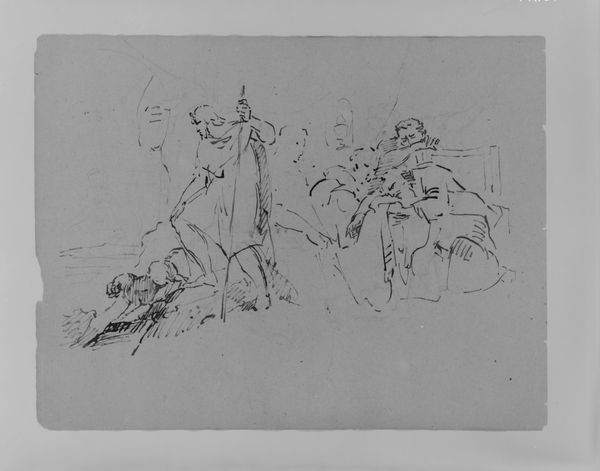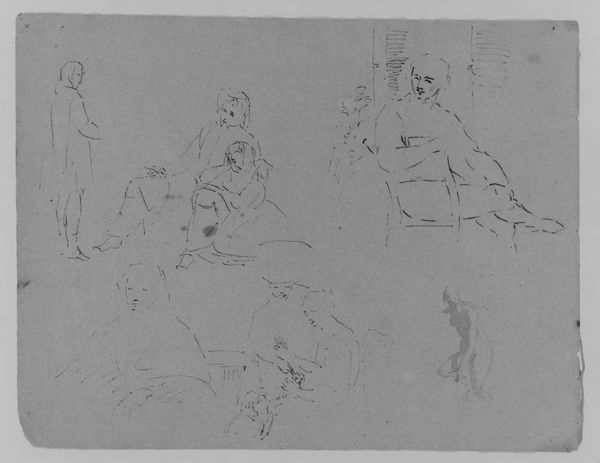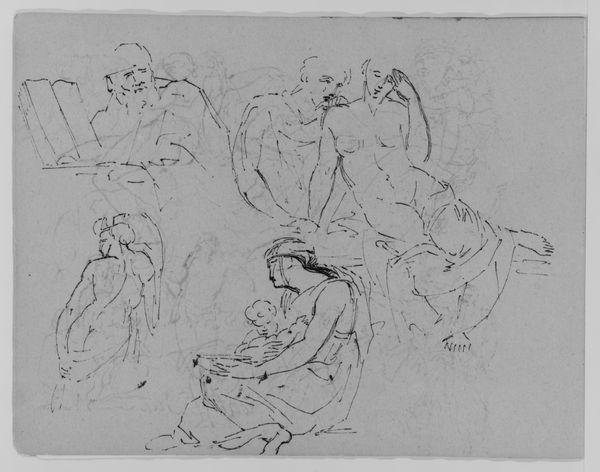
Woman Attended by Servants; Emblematic Symbol; Sceptre (from Sketchbook) 1810 - 1820
0:00
0:00
drawing, paper, ink, pen
#
portrait
#
drawing
#
allegory
#
narrative-art
#
pencil sketch
#
figuration
#
paper
#
ink
#
romanticism
#
pen-ink sketch
#
line
#
pen
#
history-painting
Dimensions: 9 x 11 1/2 in. (22.9 x 29.2 cm)
Copyright: Public Domain
Editor: This pen and ink sketch from Thomas Sully, dating from 1810 to 1820, titled "Woman Attended by Servants; Emblematic Symbol; Sceptre," features a central female figure surrounded by others in what appears to be a scene of service. The lines are so delicate, almost ephemeral. I’m intrigued by the seemingly classical aesthetic conveyed with such basic materials. How do you interpret this work, focusing on the artistic process? Curator: Considering Sully’s sketch through a materialist lens, we should consider the economic and social systems underpinning its creation. Think about the cost of ink and paper in the 19th century, and the cultural capital necessary to engage in artistic practice. Pen and ink as materials place this work firmly within the realm of drawing, often viewed as preparatory. Could it be that this "sketch" challenges the established hierarchy separating preparatory work from finished painting, raising questions of value and artistic labor? How might this sketch's dependence on cheap and readily available material influence its subject and symbolic intention? Editor: So you're saying that even a preliminary sketch like this, with its seemingly simple materials, can comment on larger structures of artistic production? Is Sully maybe suggesting the value is not *just* in the final, polished painting? Curator: Precisely. This wasn’t produced in a vacuum. We can consider what other social exchanges informed Sully's selection and use of his medium. We might even analyze the role of patronage. Was this sketch commissioned? Or was it a study done independently? Such insights help deconstruct romantic notions of solitary artistic genius. We can examine this "low" art with the same critical rigor afforded "high" art. Editor: I hadn't thought about it that way. It shifts my understanding from aesthetic appreciation to considering art as a form of material practice deeply interwoven with society. Curator: Absolutely. We can gain new understandings of past practices when we ask 'what was involved in its making?’ and ‘how did the economic reality factor into artmaking choices?' Editor: This definitely changed my perspective, considering artistic choices as also products of the time, labor, and materials that went into it. Thanks!
Comments
No comments
Be the first to comment and join the conversation on the ultimate creative platform.
